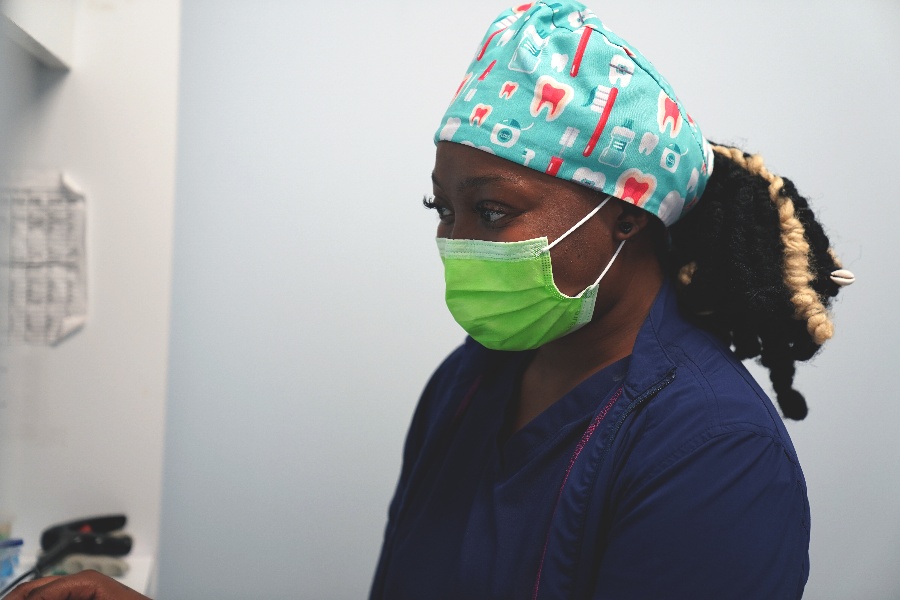Insurance claims for oral surgery denied? Here are 5 reasons why...


Billing at an oral surgery practice can sometimes feel like sailing through uncharted waters. The complexity of procedures coupled with the intricacies of medical and dental insurance claims for oral and maxillofacial surgery (OMS) can create a perfect storm of challenges.
And when an OMS claim is denied, that’s delayed revenue for your oral surgery business.
DCS works with oral surgery providers to ensure revenue flows freely through their business, instead of stalling out at obstacles such as denied insurance claims. Through working closely with oral surgery teams since 2021, we’ve seen the biggest reasons their insurance claims — both medical and dental — are denied.
This article dives into 5 reasons your oral surgery claims are denied. By understanding why your claims are denied, you can take action to transform your lost revenue into cash in hand.
At the end of this article, we even offer you a painless and profitable solution to denied claims at your oral surgery business.
Reason #1: Coding woes — Wrong diagnostic code and/or CPT code
When it comes to insurance claims, codes are a secret language. Diagnostic and Current Procedural Terminology (CPT) codes play a pivotal role in oral surgery claims.
CPT codes:
- Report medical treatments to medical insurance plans
- Describe the services provided, and
- Are reported to the medical carrier on a CMS 1500 claim form
Coding can be complicated, especially with the annual updates and changes. But accurate coding is essential to claim reimbursement. Even a small coding mistake can trigger red flags for insurers and lead to claim denials.
Related: CDT codes vs CPT codes: What’s the difference?
Using the wrong codes can cause insurance companies to deny claims outright or underpay them, requiring your team to resubmit claims or send an additional bill to your patients.
Your team loses time, and you could lose money — and also your patients’ goodwill.
Reason #2: No proof, no reimbursement — Not attaching proper documentation for procedures
Documentation on insurance claims provides proof that treatment was necessary, and it also proves that treatment was performed as claimed. This proof is a key element to your claim being reimbursed by insurance — or not.
Attached documentation on a claim comes in the form of:
- X-rays
- Periapical (PA)
- Panoramic (Pano)
- Full Mouth X-ray (FMX)
- Intraoral photos
- Clinical notes
- Charting
- Narratives
For more on how our client-partners tackle OMS billing, download the case study below:
Specific treatment requires specific documentation. When in doubt, contact the respective insurance provider and ask! It’s better to get an answer straight from the source than to guess incorrectly and receive a claim denial because the correct documentation wasn’t attached.
Dive deeper into Why attachments are important in dental insurance claims in our Learning Center.
Reason #3: Medical vs. dental claims — Not knowing when to send to which one
Recognizing when to send a medical claim versus when to send a dental claim is challenging, especially as an oral surgery provider. The correct choice is completely dependent on: 1) the kind of treatment the patient is receiving, and 2) the cause of said treatment.
For example, you would file a medical insurance claim instead of dental:
- If there is oral trauma
- If the patient has to be put under anesthesia
and, in most cases:
- If the reason for the procedure is due to an accident.
Here is a good rule of thumb to remember: the more serious a procedure is, the more likely it should be filed as a medical claim.
Because each patient’s treatment and reason for treatment is unique, it’s difficult to know when to send which claim. Choosing the wrong one guarantees a delay in claim reimbursement and more work for your administrative team.
The efficiency of your entire oral surgery practice is thrown off by this extra administrative burden, leading to delayed or lost in revenue, uncertain cash flow, and a frustrated team.

Reason #4: Behind the times — Using outdated claim forms
In the fast-paced world of dentistry, keeping up with the latest forms might not be your top priority. But it should be.
Dental and medical insurance companies occasionally update their claim forms and what information is needed. It’s important to stay on top of when these changes happen, so you are not submitting outdated claim forms that lead to denials.
Again, when in doubt: contact the insurance company. The ADA also keeps track of dental insurance claim forms here, and updates it annually.
Reason #5: Undefined medical necessity — Using improper narratives
The narrative you provide with an oral surgery claim is the story that ties all the documentation together. A poorly constructed narrative can spell disaster for your claim's fate.
Here are a few quick tips for writing a narrative on your claim:
- Avoid stock narratives. A stock dental narrative is a pre-written dental narrative that includes keywords insurance companies can pick up on to determine your reimbursement. When copied directly from another patient’s narrative or a generic template, stock narratives are not always accurate to what your patient required or what their treatment was.
- Make the narrative detailed but keep it concise. Include all the necessary facts of the patient’s procedure, and what the patient’s insurance provider is looking for as justification for the treatment. Make sure you include why the treatment was necessary and the details of the procedure performed. To keep it concise, remember that you can use abbreviations.
- Include information that an insurance company would not glean from an X-ray or photo. When you are looking into a patient’s mouth, it will be obvious to you why treatment is needed. But the person reviewing your claim doesn’t have the same viewpoint. Make sure you describe the functionality of the tooth (or lack thereof) to prove the need for treatment. For example, identifying discoloration isn’t enough—you need to describe the amount of decay or damage to the tooth.
Narratives are crucial for prompt reimbursement. As the person who is attending and witnessing the patient’s treatment, you’re in the prime position to effectively convey the necessity for that treatment.
Transform claim denials into dollars with OMS billing by DCS
Here’s a quick recap of the 5 reasons why your OMS insurance claims are denied:
- Coding woes — Wrong diagnostic code and/or CPT code
- No proof, no reimbursement — Not attaching proper documentation for procedures
- Medical vs dental claims — Not knowing when to send to which one
- Behind the times — Using outdated claim forms
- Undefined medical necessity — Using improper narratives
Denied claims are dollars you’ve earned that you’re leaving on the table. So what can you do?
You could look into resources for training your team on oral surgery claims best practices. But this education would need to be ongoing, as the rules of dental and medical insurance are continuously evolving.
Or, you can use the oral and maxillofacial surgery billing services at DCS. Our trained OMS experts deliver fast, accurate insurance collection for OMS teams.
To submit successful claims, they will:
- Ensure current claim forms are used
- Confirm that appropriate codes are selected
- Verify all supporting documents are attached
- Make sure the narrative is clear and complete
- Collect reimbursement from all available medical and dental benefits
Stop leaving claims revenue on the table and collect all that you’ve earned: Book a call with our RCM experts at DCS.
Related Posts
Dental revenue resources from Dental Claim Support


